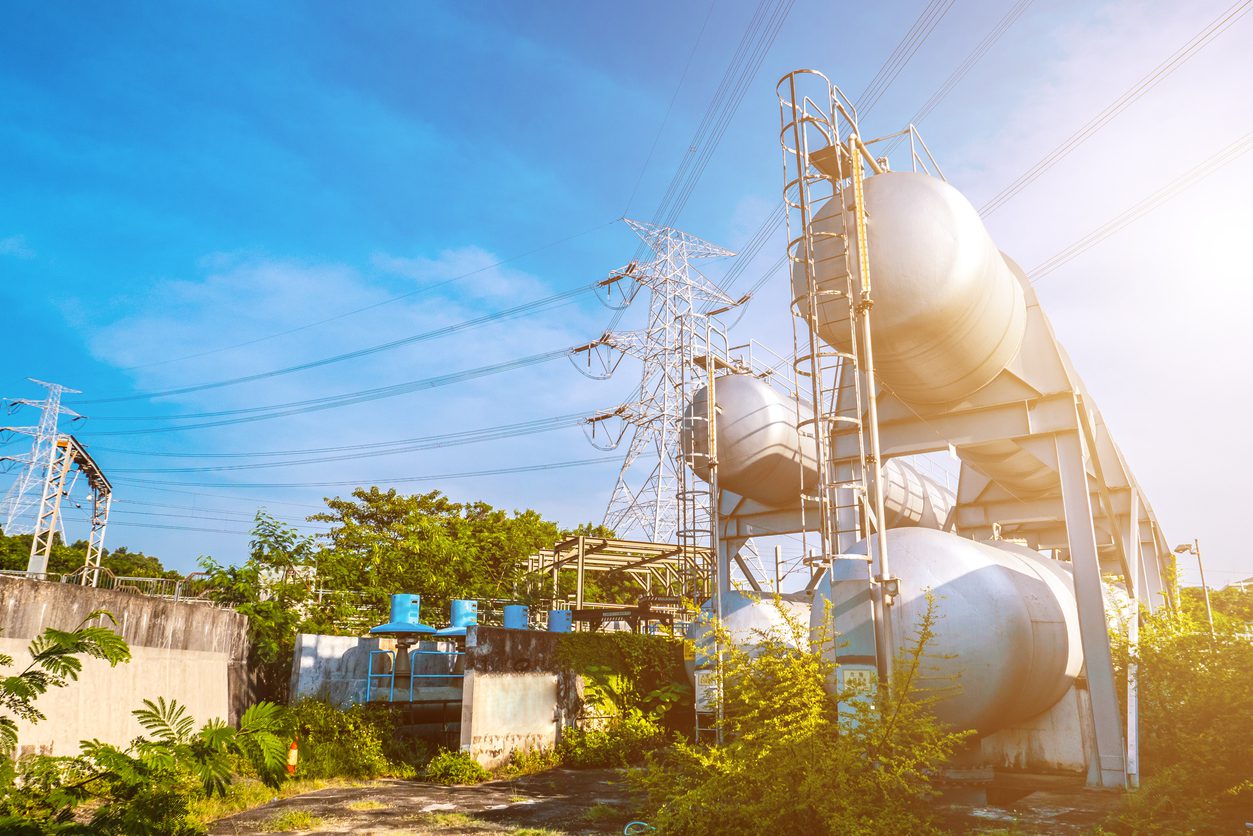In October 2020, the Russian government adopted a roadmap for hydrogen development, another measure to help ensure low-carbon economic growth. What role will the Russian Federation and SEFE Marketing & Trading play in the global effort to reduce carbon emissions?
Romanov:
Contrary to the global trend of increasing global CO2 emissions, Russia has already managed to reduce its greenhouse gas emissions by almost 50% compared to the baseline year 1990. Regional gasification and the conversion of vehicle traffic to natural gas have made a significant contribution to reducing emissions. At the same time, the specific carbon intensity of the Russian energy sector is already lower than in many other pioneers of the energy transition, such as in Germany, Japan, the USA, etc. The development of hydrogen technologies based on natural gas will reduce emissions even further.
SEFE Marketing & Trading is working systematically to reduce specific greenhouse gas emissions. It has set goals for reducing these emissions over a 10-year horizon. SEFE Marketing & Trading is currently developing the scenarios for its sustainable development until 2050. This initiative considers the low-carbon trend of the global economy, which sets the climate targets by 2050.
In July last year the European Union published the final version of its hydrogen strategy, which prioritises the development of “clean” green hydrogen from wind and solar energy. How would you assess this approach?
Romanov:
Different types of hydrogen will be needed over the short and medium term to reduce carbon emissions and create a competitive market. The demand for hydrogen in the EU will probably grow significantly by 2050, and the resulting gap will have to be covered by imports, according to experts.
If we compare the production of hydrogen from water or natural gas, we see that the splitting of a water molecule requires more energy than between carbon and hydrogen atoms. This additional need is due to the stronger chemical bonds between oxygen and hydrogen atoms. That means, for example, that methane pyrolysis is more energy efficient and generates more hydrogen at the same energy costs, even when using renewable energies as an energy source. In this case, using hydrogen from water can theoretically generate as much energy as is required for the production of this hydrogen, and if the losses in the processes of production, transmission, storage and use are considered, it is only half as much.
Reliable partners can facilitate the implementation of the European Union’s ambitious strategy in order to close the forecasted supply gap. This can be accomplished via exports and by producing hydrogen in the EU through joint projects. Russia’s potential to produce low-carbon hydrogen from natural gas should be highlighted in this context. This potential is already the basis for the development of the hydrogen economy. Russia is furthermore the second largest exporter of ammonia worldwide. It exports approximately 3.7 million tons.
The collaboration between Russia and the European Union in the field of hydrogen energy is at an early stage. What measures could foster this collaboration and what could be the driving force behind the development of hydrogen energy?
Romanov:
First, investment in research into new energy generation and transportation technologies is necessary. This, in turn, requires an analysis of the capacity and pricing parameters of the targeted hydrogen consumption markets and the modes of transport. It makes sense in the first phase to strike a balance between centralised and decentralised capacities as well as various technological approaches.
This would make it possible to take into account all possibilities for a broad use of hydrogen in the future. I believe that “organic” growth in hydrogen production near large industrial consumers makes sense.
In December 2020, SEFE Marketing & Trading announced the creation of a subsidiary, SEFE Marketing & Trading Hydrogen. What are the next steps in the development of hydrogen production technology at SEFE Marketing & Trading?
Romanov:
Hydrogen represents a new opportunity for SEFE Marketing & Trading to diversify its product portfolio in the future as part of the transformation of the energy sector. SEFE Marketing & Trading Hydrogen will participate in innovative hydrogen energy pilot projects that aim to create low-carbon technologies to produce hydrogen. Feasibility studies will be carried out regarding the transport of hydrogen in a variety of forms, including as ammonia or using LOHC technology. The potential of methane pyrolysis technology will be explored further. Preliminary research findings confirm that methane pyrolysis can be a competitive carbon-neutral technology.
How can methane pyrolysis contribute to carbon neutrality?
Romanov:
The possibility of producing pure hydrogen and solid carbon from methane by pyrolysis is known. Using renewable energies makes this type of production a low-carbon alternative. Offsetting measures to absorb greenhouse gases make it carbon neutral. Valuable products can also be made from solid carbon, including synthetic graphite, graphene, fullerenes or carbon nanotubes. These products have promising applications in electrical engineering, electronics, construction and mechanical engineering.
Unlike carbon dioxide in its gaseous form, solid carbon is easy to store. The production of solid carbon would therefore achieve more than just a reduction in direct carbon dioxide emissions. It would also create new market opportunities.
What is wrong with relying on green hydrogen alone?
Romanov:
The terms “green” and “clean” hydrogen are used synonymously in EU documents. This classification, however, is not entirely objective and fair because it ignores the entire process chain connected with the production of equipment for renewable energies and the upstream phase of the mining of rare earths. We support the principle of technological neutrality based on a carbon footprint and economic feasibility. Decarbonising the economy will require significant amounts of hydrogen. All hydrogen must therefore be used, even if its production generates minimal carbon emissions. This is the only approach that will enable a cost-effective establishment of a decarbonisation policy and contribute to the most effective possible reduction in greenhouse gas emissions.
The hydrogen produced by pyrolysis is environmentally friendly and complies fully with the EU’s decarbonisation requirements. Considering the gas transport through the new Russian pipelines and the use of renewable energy sources, the carbon footprint of hydrogen production near the Nord Stream exit point is estimated to be only 1.2 –1.6 kilogrammes of carbon-equivalent per kilogramme of hydrogen. This number is fully consistent with CertifHy’s low-carbon hydrogen certification criteria, as well as with the sustainable investment classification parameters of the EU taxonomy.
Methane pyrolysis also has some advantages from a commercial perspective. With an estimated cost per kilogramme of hydrogen production at $ 1.36 – $ 1.79 and considering the commercialisation of solid carbon, methane pyrolysis is competitive with electrolysis ($ 4.61 – 14.87 / kilogramme hydrogen) and steam reforming ($ 1.03 – 2.16 / kilogramme hydrogen). In addition, methane pyrolysis results in the lowest costs among low-carbon and renewable hydrogen, which would make it an important part of the future EU circular economy.
This article was originally published in Energate Magazine.
The views, opinions and positions expressed within this article are those of a third-party content provider and do not represent those of SEFE Marketing & Trading. The accuracy, completeness and validity of any statements made within this article are not guaranteed. SEFE Marketing & Trading accepts no liability for any errors, omissions or representations.









